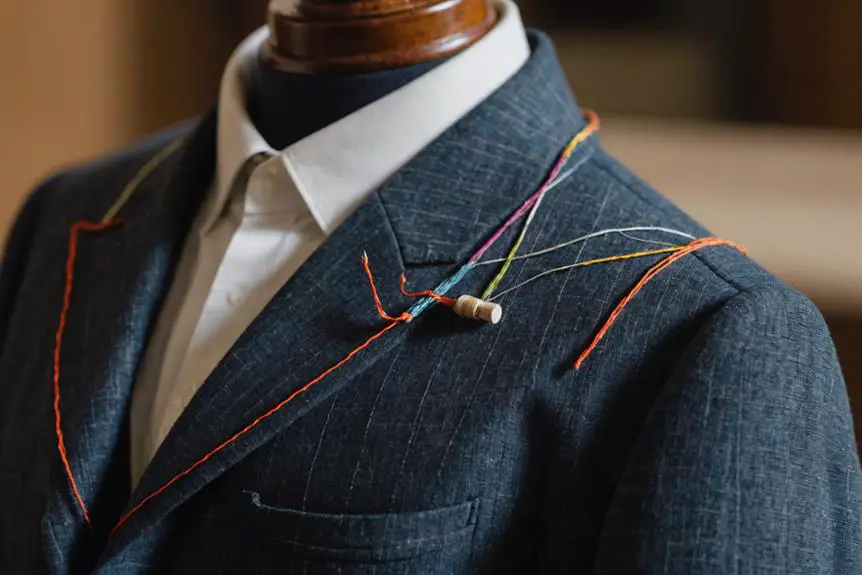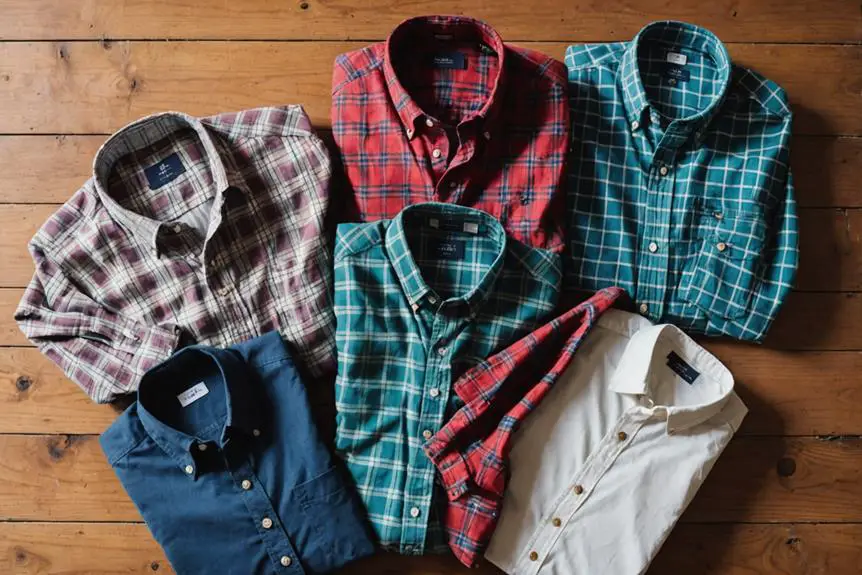If you've noticed your shoulder pads hanging loosely or shifting during play, it's vital to address the issue promptly for both comfort and safety. You'll want to start by checking the fit over your shoulders and sternum, making sure everything aligns properly. Adjusting the front laces and straps can make a significant difference, but that's just the beginning. After securing all components, consider how each adjustment affects your overall mobility. The real question is, how do you guarantee the perfect fit while maximizing protection? Let's explore the finer details of this process.
Identify the Problem
To effectively identify the problem with your loose shoulder pads, start by examining how they fit on your body. Are they snug or floating around like a beach ball? A good fit is essential, especially since those shoulder pad materials are meant to protect you. If your pads aren't properly sized for your chest and shoulder width, they might as well be a costume from a bad movie!
Next, check if your pads are aligned correctly. They should cover your sternum and shoulders adequately. If they're not, you risk compromising your protection, which isn't great for player injury prevention. Remember, you want those pads hugging your shoulders, not dancing around during the game!
Also, take a moment to look at those belts. Are they buckled tightly around your chest and back? If they're loose, your shoulder pads could shift during play. That's like trying to play football with a marshmallow stuck to your back—it's not going to work out well!
Lastly, the foam padding should rest at least 1/4 inch above the tip of your humerus. This little detail helps maintain stability. If it's hanging lower, it could lead to more bouncing than you'd want.
Adjust Front Laces and Straps
When you're ready to secure those loose shoulder pads, start by adjusting the front laces for a snug fit. You want them tight enough to keep everything in place, but not so tight that you feel like a sausage in a casing. Ouch! Pull the laces evenly and check that they're not pinching your underarms. Comfort's key, right?
Now, let's talk straps. Grab the straps connected to the front and back of your shoulder pads. Pull 'em to make sure they align just right. This is super important for impact absorption during your game. You don't want your pads shifting around when you're trying to make that epic tackle or catch!
As you tighten those straps, keep an eye on both sides. They need to be evenly adjusted to maintain balance. Think of it like balancing a seesaw—if one side's too tight, you'll be leaning like a pirate on a ship! After you've made your adjustments, move around a bit. Twist, turn, and jump—whatever gets you moving. This helps you double-check that your shoulder pads are snug and secure without any annoying gaps or looseness.
Secure Buckles and Belts
Alright, let's talk about securing those buckles and belts! You want to make sure every buckle's tight and ready to go, so your shoulder pads stay put during the game. Plus, adjusting the belt length is key—no one wants their pads shifting around like a wobbly table at dinner, right?
Check Buckle Tightness
A secure fit is essential for effective performance on the field, so checking the tightness of your buckles and belts is crucial. You don't want those shoulder pads shifting around when you're making that game-winning tackle! First, make sure all your buckles are securely fastened before each practice or game. It's a quick step that can save you from distractions during play.
Now, let's talk about buckle materials. They need to be strong and durable, but they can wear out over time. Regularly inspect your buckles for any signs of wear and tear. If you see cracks or fraying, it's time for some buckle maintenance. A damaged buckle won't hold your pads securely, and we definitely don't want that!
Next, adjust those straps and belts for a snug fit. You should be able to move comfortably, but not so loose that they could fly off at any moment. Tighten the front laces of your shoulder pads for extra stability. Remember, a snug belt around your chest and back keeps everything in place during impacts. So, before you hit the field, give those buckles a good check!
Adjust Belt Length
After confirming your buckles are tight, it's time to focus on adjusting the belt length for ideal fit. You want those shoulder pads to sit securely on your torso, right? First, find the right position on your body where they should rest. Make certain the buckles align perfectly before tightening the belts—mismatched buckles can lead to discomfort during play, and nobody wants that!
When securing the belts, pull them snugly, but don't go overboard. You need support without pinching those sides or underarms. Trust me, comfort matters when you're out there playing hard! After adjusting, double-check that the shoulder pads stay aligned and don't shift as you move or raise your arms.
Lastly, keep an eye on the belt length and buckles for wear and tear. A secure fit is essential for both comfort and player safety. Don't skip this step; your shoulder pad materials depend on it!
| Belt Adjustment Tips | Why It Matters |
|---|---|
| Align buckles properly | Prevents discomfort |
| Pull snug, not tight | Guarantees comfort during play |
| Check alignment | Keeps pads secure while moving |
| Inspect regularly | Guarantees safety and protection |
| Adjust for comfort | Enhances overall performance |
Check for Additional Padding
When evaluating your shoulder pads, always check for additional removable padding inserts that can enhance the fit. You might not realize it, but these little guys can make a big difference! If your shoulder pads feel loose, it could be because the foam padding isn't positioned right. Have you ever noticed it shifting or getting compressed? That's a recipe for disaster, making your pads feel wobbly and unsecure.
Take a moment to verify that your shoulder pad types are compatible with your gear. Mismatched equipment can lead to all sorts of problems, including improper fit and functionality. And let's be honest, nobody wants to look like a bobblehead on the field!
Plus, don't forget about those adjustable straps. They're your best friends for tightening the fit. Adjusting them can help accommodate your size and keep those pads snug during play. If they're flopping around like a fish out of water, you're not going to perform your best.
Lastly, it's crucial to regularly inspect and replace any worn-out padding materials. Degraded materials can lead to a loss of support, making it even easier for those shoulder pads to go rogue. So, give your gear some love! Check those extra padding inserts—you might be surprised by how much they can help. Trust me, a little adjustment can lead to a whole lot of confidence on the field!
Assess Overall Fit
To guarantee your shoulder pads provide ideal protection and comfort, make it a priority to assess their overall fit. Start by ensuring the pads sit snugly over your shoulders. You don't want them pinching or binding around your collar and neck area—that's a recipe for distraction during play!
Next, check the foam padding. It should sit at least 1/4 inch above the tip of your humerus. Why? Because proper coverage is essential for protection, and we don't want any surprises out there!
Now, take a look at the alignment of your shoulder pads. They should effectively cover your sternum, upper shoulders, scapula, and back. If they're shifting around, it's time for some fit adjustments. You can use your chest size and shoulder width as a guide for making those tweaks. Remember, different shoulder pad types may require different adjustments, so be mindful of what you're working with.
A well-fitted shoulder pad allows for full mobility while staying securely in place during play. If they're loose or dangling, they can be a real hassle—and nobody wants to be that player fumbling around!
Test Mobility and Comfort
Your shoulder pads should feel like a natural extension of your body, allowing you to move freely without any hindrance. Once you've adjusted them, it's time to test mobility and comfort. Start by raising your arms and rotating your shoulders. Does it feel snug but not restrictive? If you notice any excessive movement, you might need to tighten those front laces and straps a bit more.
Next, put those pads to the test with some common football movements. Go ahead and run, make lateral cuts, or even throw in a few spins. Are there any pinching feelings or restrictions? If so, that's a sign your shoulder pad types may not align with your player preferences. Comfort is key; you want to be able to focus on the game, not fidgeting with your gear.
Also, check that the foam padding rests at least 1/4 inch above your humerus tip. This positioning is essential for both comfort and protection during impacts. Remember, after practices or games, reassess how the pads fit. Your body can change, and so can the way those pads sit on you.
In the end, the right fit will keep you feeling confident and ready to play. So, keep it light, stay flexible, and make sure your shoulder pads are doing their job without getting in the way. You're out there to dominate, not to wrestle with your gear!
Frequently Asked Questions
How Do You Fix a Loose Shoulder Capsule?
To fix a loose shoulder capsule, focus on rehabilitation exercises that strengthen your shoulder anatomy. Incorporate stretches and resistance training to improve stability, ensuring your shoulder maintains proper alignment and function during activities.
How to Fix Loose Ligaments in the Shoulder?
Like a house on shaky ground, your shoulder needs stability. Focus on strengthening the surrounding muscles through targeted exercises and consider ligament rehabilitation. Regular check-ups will help guarantee your shoulder anatomy stays healthy and functional.
How Can I Make My Shoulder Pads Fit Better?
To make your shoulder pads fit better, focus on shoulder pad adjustments. Use fitting techniques like adjusting straps snugly and ensuring proper foam positioning, so you maintain comfort while maximizing protection and mobility during play.
Can You Fix Shoulder Instability Without Surgery?
Strengthening surrounding muscles substantially supports shoulder stability. You can explore non-surgical options like physical therapy, targeted exercises, or supportive braces. These strategies can effectively enhance your shoulder's strength and stability without the need for surgery.




